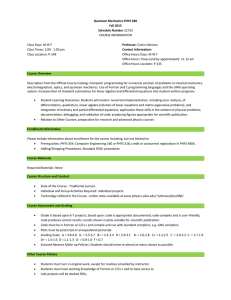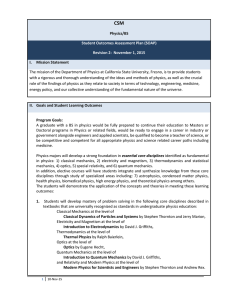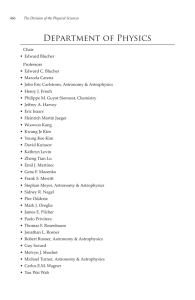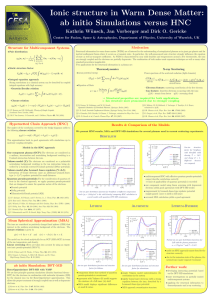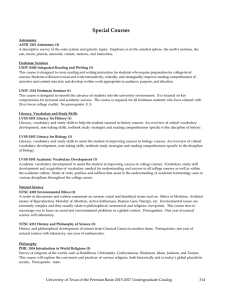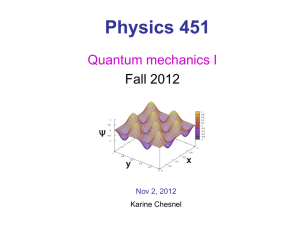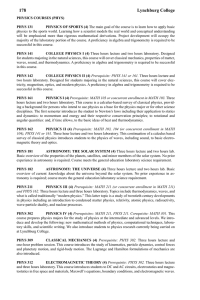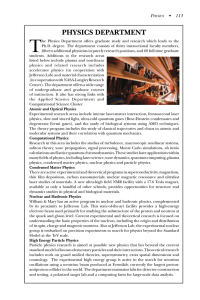ENGINEERING PHYSICS – TAS Outcomes and Curriculum Map 2015-16
advertisement
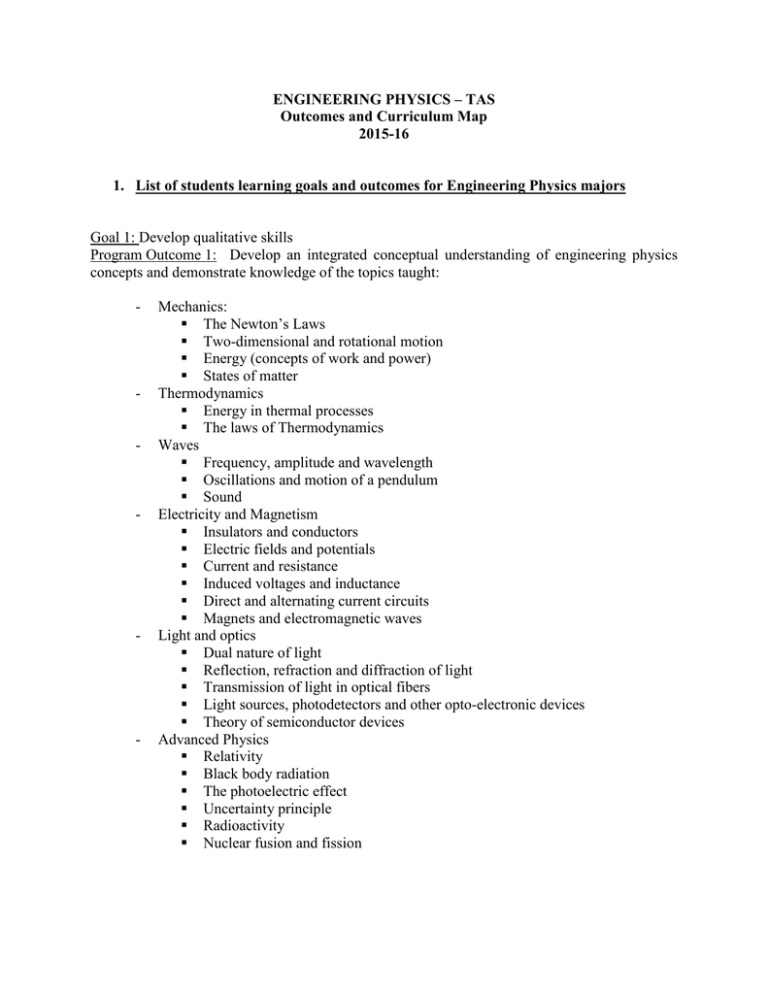
ENGINEERING PHYSICS – TAS Outcomes and Curriculum Map 2015-16 1. List of students learning goals and outcomes for Engineering Physics majors Goal 1: Develop qualitative skills Program Outcome 1: Develop an integrated conceptual understanding of engineering physics concepts and demonstrate knowledge of the topics taught: - - - - - - Mechanics: § The Newton’s Laws § Two-dimensional and rotational motion § Energy (concepts of work and power) § States of matter Thermodynamics § Energy in thermal processes § The laws of Thermodynamics Waves § Frequency, amplitude and wavelength § Oscillations and motion of a pendulum § Sound Electricity and Magnetism § Insulators and conductors § Electric fields and potentials § Current and resistance § Induced voltages and inductance § Direct and alternating current circuits § Magnets and electromagnetic waves Light and optics § Dual nature of light § Reflection, refraction and diffraction of light § Transmission of light in optical fibers § Light sources, photodetectors and other opto-electronic devices § Theory of semiconductor devices Advanced Physics § Relativity § Black body radiation § The photoelectric effect § Uncertainty principle § Radioactivity § Nuclear fusion and fission Goal 2: Develop analytical / solving problem skills Program Outcome 2: Develop analytical skills by demonstrating the ability of applying the acquired knowledge of the material to solve problems. Goal 3: Develop interdisciplinary skills Program Outcome 3: Apply acquired mathematical skills to solve engineering physics problems. Demonstrate proficiency in applying theoretical physics concepts to practical engineering applications. Goal 4: Develop experiential laboratory / research skills Program Outcome 4: Develop hands-on laboratory skills, including methods, data collection, error analysis, graphing and statistical methods. (Information Literacy) Goal 5: Develop Communication skills Program Outcome 5: Write precise and concise scientific reports related to laboratory or research assignments. Display proficiency in providing an oral presentation of an engineering physics related field. Goal 6: Develop cultural integration of scientific disciplines Program Outcome 6: Learn about History and current developments in the fields of Engineering Physics. Develop an adequate understanding of scientific progress, the evolution of technology and the role of science and technology in modern society. (to be assessed in 2012-2013) 2. Engineering Physics Curriculum map Courses PHYS114: Phys with Calc I (w/lab) PHYS115: Phys with Calc II (w/lab) PHYS210: Modern (w/lab) PHYS240: Electronics I (w/lab) PHYS241: Electronics II (w/lab) PHYS322: Advanced Mechanics PHYS323: Electrodynamics I PHYS324: Electrodynamics II PHYS330: Semiconductors PHYS350: Thermodynamics PHYS422: Condensed Matter PHYS423: Quantum I PHYS424: Quantum II PHYS425: Advanced Topics: Math Phys PHYS425: Advanced Topics: Medical Phys PHYS 431: Experimental Methods in Physics PHYS432: Photonics I= Introduce P= practice M= master Outcome Outcome Outcome Outcome Outcome Outcome 1 2 3 4 5 6 I I I I I I P P P P P P P P P M M P I I I P P I P P P M M P M M M M p p p p M M M M P P P P M M M M M M M M M M M M M M M M M M M M M M M M M M M M M M M M M M

